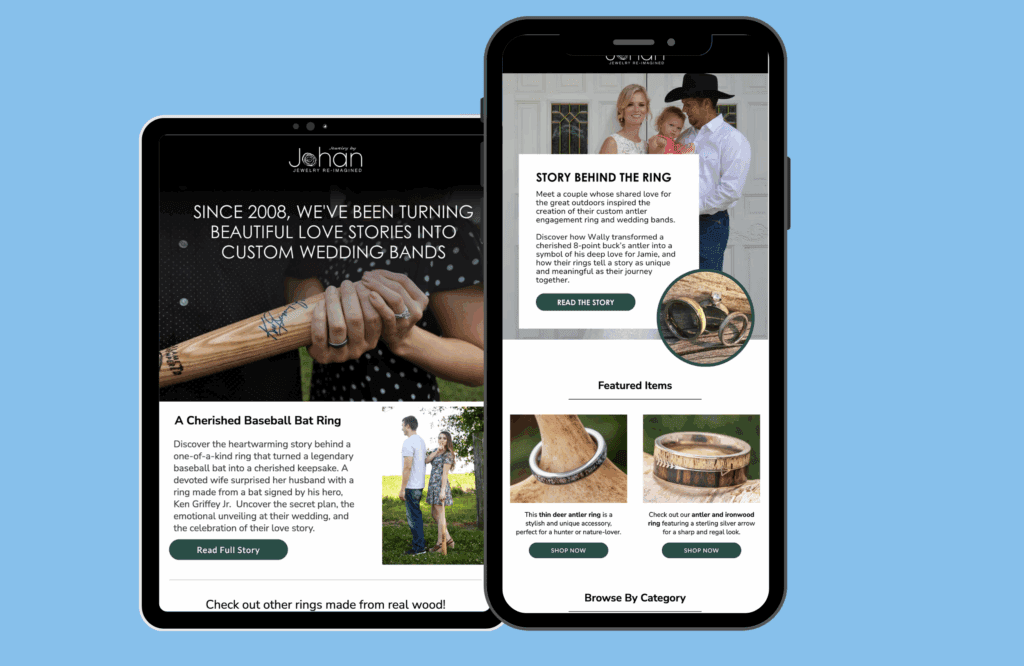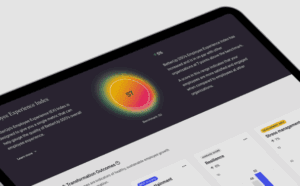Home / Blog / Nurturing, Not Just Promoting: A Guide to Community-Building in Email Marketing
Nurturing, Not Just Promoting: A Guide to Community-Building in Email Marketing
Published: June 12, 2025
Share on LinkedIn Share on Twitter Share on Facebook Click to print Click to copy url

Contents Overview
In email marketing, it’s easy to fall into the habit of only hitting send when there’s something to sell. A new product. A flash sale. A limited-time offer. Promotions like these are essential in driving revenue through email marketing, but non-promotional, value-added emails have a place in your overall strategy as well.
Once a strategic email marketing strategy that incorporates nurture sequences and non-promotional email campaigns has been developed, many brands find they don’t need a discount to convert subscribers into revenue for their business.
This new, well-rounded email marketing approach allows businesses to develop a community around their brand, grow a loyal customer base, and ultimately establish a long-term revenue impact.
What is email nurturing, and why does it matter?
Nurturing is an act of trust-building with your audience. When you bring value to their inbox, you can turn subscribers into loyal brand advocates. Nurturing your email audience means giving them a reason to stay engaged even when they’re not actively shopping.
Email is not intended to be a one-way broadcast channel. It is a platform to facilitate a two-way relationship with your audience. That means you are not always asking for something (a sale, a click, a conversion). Rather, you want to consistently show up with something meaningful to engage your audience in, whether that’s a helpful tip, an inspiring story, or a glimpse behind the curtain.
Nurturing not only keeps your brand top of mind, so they remember you when it’s time to purchase. Instead, it keeps your audience in constant engagement with you, so the purchase is a natural next step in their journey with you.
What to avoid when developing your email marketing strategy:
Building a strong community through email means breaking a few bad habits. Here’s what to steer clear of:
- Constant Discounts: Relying too heavily on discounts trains your audience to wait for the next deal. Your promotions lose their power, urgency fades, and full-price purchases become rare.
- Generic Messaging: One-size-fits-all doesn’t work. If your content isn’t tailored to your audience, it leads to low engagement and high unsubscribe rates. Whether it’s based on past purchases, engagement history, or customer interests, segmentation can transform your messaging from generic to genuinely relevant.
So what does a nurturing strategy look like in action?
Here are a few ways you can begin to nurture your audience.
Provide Value Beyond the Sale
Offer content your audience actually wants to read. Share tips, how-tos, inspiration, or even behind-the-scenes content. Teach them something. Entertain them. Make them feel like they’re part of something. The goal is to communicate the relationship with your brand does not end at the time of purchase. The purchase point in fact should feel like the beginning of a journey to your customer as they then learn how to use your product and reap the benefits over time until another purchase is made.
Educate and Empower
Think beyond your product. Help your audience better understand your brand’s mission, values, and expertise. Empower them to make confident choices with your product or service, and give them the sense that they are a part of something unique when choosing to purchase with you.
Be a Storyteller
Stories spark emotion, and emotion drives action. Whether it’s a founder story, a customer testimonial, or a campaign with heart, storytelling helps create authentic connections that last. Making a customer feel they are a part of something bigger than themselves is how you build community.

Cadence counts: When and how often you send matters
What you send matters, but when and how often you send it is just as important. Many of our clients assume that sending more emails automatically leads to more revenue. But more isn’t always better. Too many messages can overwhelm your audience, come across as spammy, and ultimately drive unsubscribes.
On the flip side, sending too few emails can be just as damaging. You risk losing visibility and relevance (out of sight, out of mind). It’s like going on a great first date and then not hearing from the person again for weeks. The connection fades. The same thing happens with your subscribers. Without consistent, thoughtful communication, you lose their interest, and potentially their business.
The key is finding a sustainable cadence that keeps your brand top of mind without exhausting your audience. That might be weekly, biweekly, or monthly, depending on your resources and audience expectations. What matters most is showing up consistently with something worth opening.
Why this strategy works
When every email is just another discount, customers start to tune out. They know there’s always another offer coming. But when your emails consistently offer something meaningful, more than just a “buy now” call to action, you create real staying power. Your nurture strategy boosts future sales by driving loyalty with the brand and increasing excitement and visibility when you do run a sale.
After starting monthly non-promotional newsletters, Jewelry by Johan, an online jewelry retailer that sells handcrafted jewelry made from unique materials, had a 35% increase in revenue for promotional emails and a 73% increase in total attributed revenue from email during the same 5-month period year-over-year.
Need help transforming your email marketing into a community-building machine? At Go Fish Digital, we help brands build thoughtful, effective email strategies that go beyond the inbox. You can learn more about our services here.
About Meaghan Langston
MORE TO EXPLORE
Related Insights
More advice and inspiration from our blog
BFCM Essentials for Q4 Success: How to Maximize Email, SMS, and Automations
Get your brand ready for Q4 with Go Fish’s complete BFCM...
Jeff Lawrence| October 14, 2025
How Klaviyo Predictive Analytics Improves Email Marketing Results
See how predictive analytics transforms email marketing, boosting retention, revenue, and...
Jade Richardson| September 16, 2025
Email Marketing Design Tips: Best Practices and Examples That Convert
Learn how to design emails that capture attention fast. Discover key...
Amanda Skripek| September 11, 2025





